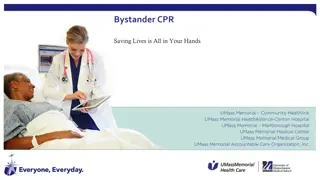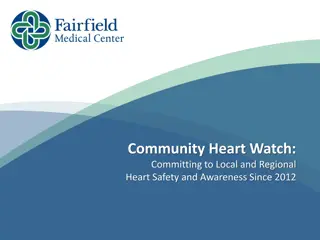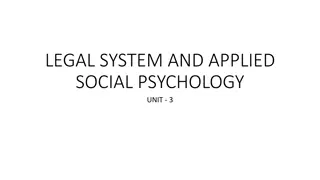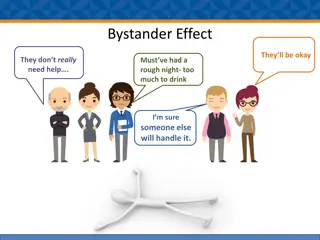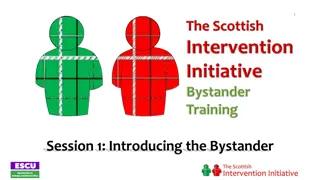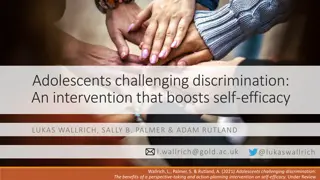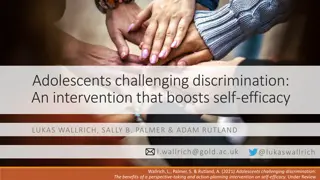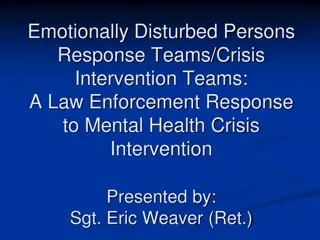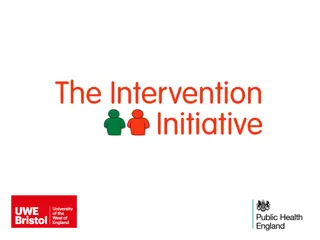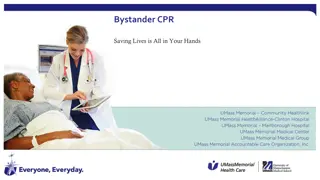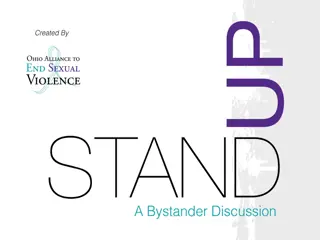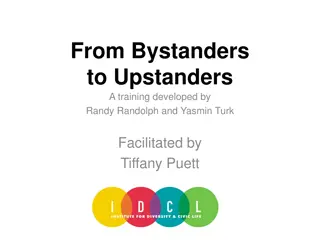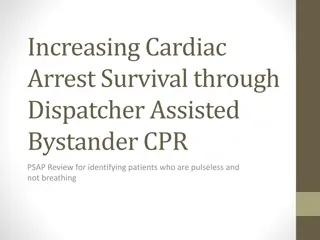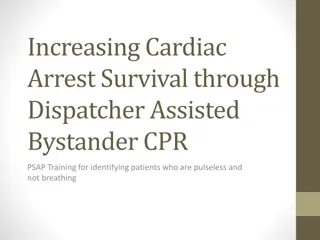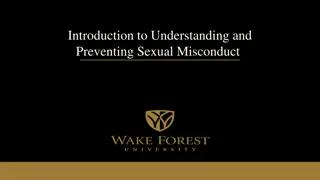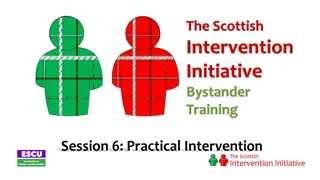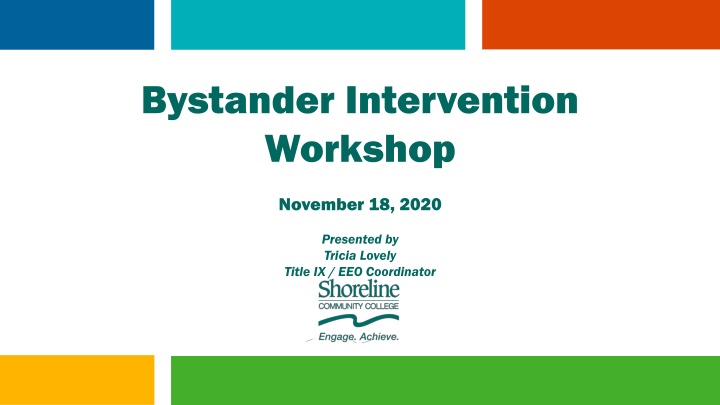
Empowering Bystander Intervention: Enhancing Safety and Support
Explore the concept of bystander intervention and its role in addressing social injustices and providing assistance. Learn strategies, overcome obstacles, and empower active bystanders for creating a culture of care and support.
Download Presentation

Please find below an Image/Link to download the presentation.
The content on the website is provided AS IS for your information and personal use only. It may not be sold, licensed, or shared on other websites without obtaining consent from the author. If you encounter any issues during the download, it is possible that the publisher has removed the file from their server.
You are allowed to download the files provided on this website for personal or commercial use, subject to the condition that they are used lawfully. All files are the property of their respective owners.
The content on the website is provided AS IS for your information and personal use only. It may not be sold, licensed, or shared on other websites without obtaining consent from the author.
E N D
Presentation Transcript
Bystander Intervention Workshop November 18, 2020 Presented by Tricia Lovely Title IX / EEO Coordinator
Todays session Introductions What is bystander intervention and how can it help? When is bystander intervention appropriate? Potential obstacles to bystander intervention Safe intervention strategies Applying your knowledge Questions
Introductions Name Something important to know about your role at Shoreline Why you re here today
Bystander intervention When individuals take positive action in the face of social injustice or when another person is in need of assistance.
Active bystanders help by: Interrupting situations in which someone is potentially at risk of harm or is otherwise in need of assistance Notifying appropriate officials when there is a problem Helping to create a culture of care in which we as individuals actively look out for each other s wellbeing Helping to shift social norms so that harmful behaviors eventually become socially unacceptable
Heres a quick overview: https://youtu.be/NNDZfZ7KYNs
In what types of situations might I intervene? EXAMPLES: You see a student making aggressive advances toward another student who appears afraid You hear a colleague saying something discriminatory about another colleague You notice that an older colleague is routinely excluded from invitations to socialize with others in the office after work Other examples?
Obstacles to intervention: Fear for personal safety Power dynamics None of my business Belief that someone else will step in ( bystander effect ) Fear of making the situation worse Ambiguity What is this going to cost me? (Time, energy, etc.)
Preparing to be an active bystander: Develop awareness Recognize and honor your own boundaries Plan what you might do or say in different situations
Before intervening Always assess the situation! Ask yourself: Is intervention needed? (If it were me or someone I love in this situation, would I want someone to help?) Am I risking my safety if I intervene directly? How likely is it to escalate the situation if I intervene? What is my goal in intervening in this situation? What strategy is most appropriate for the situation?
Intervention strategies: DIRECT DIRECT Confront the person engaged in the behavior verbally Ask the person who is being harmed if they need help Engage other bystanders to help
Intervention strategies: DISTRACT DISTRACT Interrupt the situation Engage directly with the person who is being harmed ask them for the time or for directions, pretend that you know them, etc. Engage directly with the harasser tell them their car is being towed, spill a drink on them, etc.
Intervention strategies: DELEGATE DELEGATE Turn to a third party for help Tell the person in charge in a restaurant or store, speak to the manager; on a bus, speak to the driver, etc. Contact emergency services if appropriate
Other ways to intervene: These strategies don t involve interrupting the situation, but can still be helpful: DELAY Approach the person who was harmed afterward to offer support and assistance. DOCUMENT Record the incident. Keep a safe distance. If possible, ask the person who was harmed what they would like done with the recording.
Apply your knowledge: Scenario 1: You are in a Zoom meeting at work. The discussion is getting heated and a female colleague says, in frustration: You men never listen. You re such jerks! Is this a situation where you might intervene? What are the risks of intervening? What is the downside of NOT intervening? What would be your goal in intervening? Do you decide to intervene? If so, which strategy to you use?
Apply your knowledge: Scenario 2: You are walking through a crowd of students on the second floor of the FOSS Building. There is a group of students who appear to be of Asian descent wearing masks. Another student who does not appear to be of Asian descent says loudly enough for them to hear: Why don t you take your germs and go back to China? Is this a situation where you might intervene? What are the risks of intervening? What is the downside of NOT intervening? What would be your goal in intervening? Do you decide to intervene? If so, which strategy to you use?
Apply your knowledge: Scenario 3: You see two people at a bus stop arguing. One person pushes the other person to the ground, then stands over them aggressively, shouting and threatening them with a clenched fist. Is this a situation where you might intervene? What are the risks of intervening? What is the downside of NOT intervening? What would be your goal in intervening? Do you decide to intervene? If so, which strategy to you use?
Resources A Guide to Bystander Intervention. Southern Poverty Law Center on Campus (2017). https://www.splcenter.org/sites/default/files/soc_bystander_intervention_guide_web_final.pdf Speak Up: Responding to Everyday Bigotry. Southern Poverty Law Center. Accessed 6/3/2020: https://www.splcenter.org/sites/default/files/d6_legacy_files/downloads/publication/splcspeak_up_handbook_0.p df) Engaging Bystanders to Prevent Sexual Violence: A Guide for Preventionists. National Sexual Violence Resource Center (2013). https://www.nsvrc.org/sites/default/files/2013-09/publications_nsvrc_guide_engaging-bystanders-prevent-sexual- violence_0.pdf Step UP! Bystander Intervention Program. (Accessed 6/3/2020: https://stepupprogram.org/) hollaback! Bystander Intervention Training. Accessed 6/3/2020: https://www.ihollaback.org/bystander- resources/

